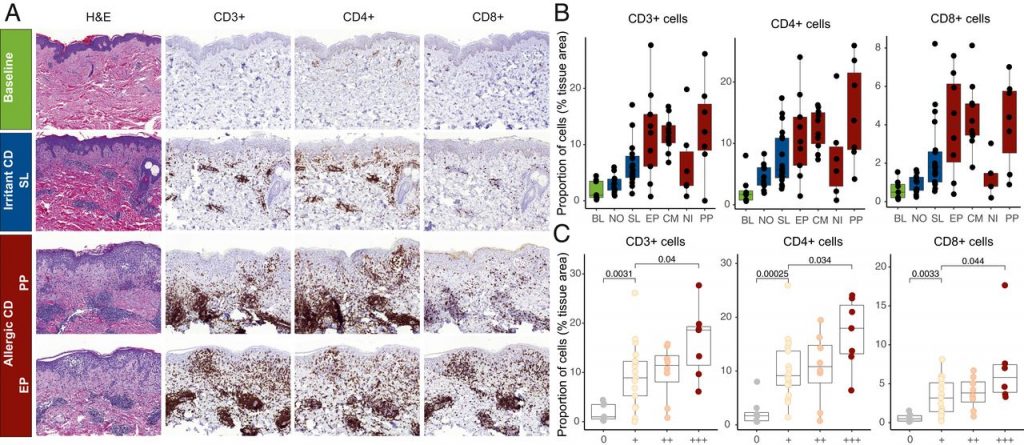
With the help of algorithms, researchers at Karolinska Institutet in Sweden have identified markers that can differentiate between irritant eczema and contact allergy, two skin reactions that look similar but require different treatment. Their findings, which are published in the journal Proceedings of the National Academy of Sciences (PNAS), support the further development of an alternative to today’s diagnostic patch tests.
About 20 percent of the population of high-income countries are troubled by contact eczema, a disease often associated with exposure to chemicals in the working environment. There are two types of contact eczema, each with its own cause: allergic contact eczema, which is caused by an allergic reaction; and non-allergic irritant eczema, which is caused by chemical agents or physical factors.
Since the two types require different treatments, it is important that the correct diagnosis is made. This can prove difficult for dermatologists, as the diseases present similar clinical symptoms. Diagnoses are normally based on the results of a patch test, which are often difficult to interpret and can sometimes give false positive or false negative outcomes.
In this present study, researchers at Karolinska Institutet and their colleagues from universities in Finland and Austria compared patch tests from 85 patients with contact eczema and healthy skin samples to examine the gene expression in the skin resulting from exposure to different allergens and irritants.
Using a machine-learning technique linked to a tailored genetic algorithm, the researchers identified sets of two or three genes that together could distinguish irritant from allergic skin reactions. The results were replicable in an independent group of patients, and in external datasets. The external datasets included patients who were exposed to different substances than those of the first group, which laid the foundation for the new biomarkers.
“Our results show that there is considerable potential for the development of a new diagnostic method based on these biomarkers,” says corresponding author Nanna Fyhrquist, researcher and group leader at the Institute of Environmental Medicine, Karolinska Institutet. “The next step in the project entails a more extensive clinical validation of the markers and technical optimisation of the method in order to attain sufficient cost-effectiveness and speed to clinical purposes.”
The study was financed by the Finnish Work Environment Fund and the Swedish Research Council for Health, Working Life and Welfare (FORTE).
https://www.pnas.org/content/early/2020/12/09/2009192117







Recent Comments